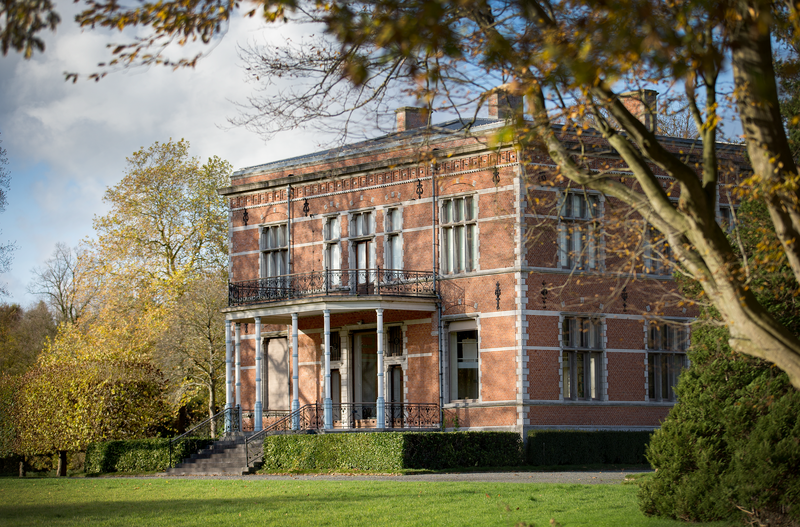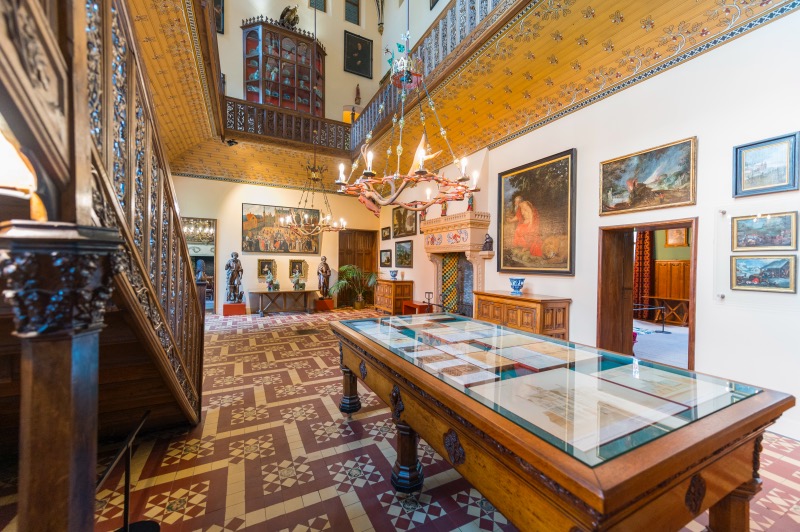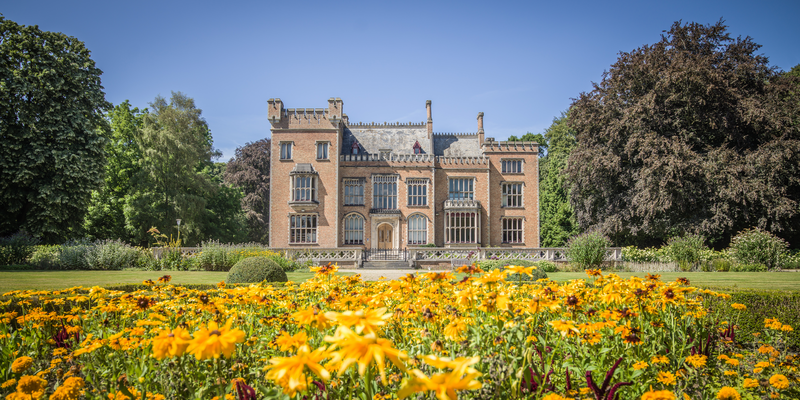
Castello di Gruuthuse
Strolling through the medieval streets, canals and historical architecture of Bruges is a unique experience.
The city in Flanders, with its UNESCO-listed historic centre, has the ability to transport you back in time and does so thanks to its heritage of art and culture bequeathed by the city’s most illustrious families.
In this post, I take you on a tour of Bruges, its castles and palaces, which represent a still little-known heritage that can be visited at leisure thanks to an efficient public transport network or the many cycling routes.
CASTLES AND PALACES OF BRUGES

Castello di Loppem
The castles and aristocratic palaces of Bruges are not only located in the city centre, but also in the surrounding area called ‘Ommeland‘, i.e. those places that were once considered perfect places to rest and were the holiday haunts of the nobles of Bruges.
The characteristic of Flanders and Bruges is to have a slow pace. The cosy, human-scale places captivate you at every step and everything tells a glorious story of merchants, patrons and artists. If you are interested in this aspect of Flanders, read my in-depth article on Art and Culture in Belgium, with the list of must-see cities in Belgium.
LOPPEM CASTLE
The most important example of neo-Gothic architecture in Flanders is Loppem Castle. Built at the behest of Charles van Caloen and his wife, Countess Savina de Gourcy Serainchamps, this castle can be visited both inside and out, with its immense park that includes a labyrinth created in 1873.
Loppem Castle was built in the mid-19th century and presents itself to visitors with an opulent façade consisting of towers, arches and a coat of arms above the central gate. Inside, the frescos with historical scenes, saints and the four cardinal virtues (prudence, justice, fortitude and temperance) are enchanting, but the original furnishings, tapestry, stained glass, paintings, tapestries and sculptures are also a sight to behold.
OOSTKERKE CASTLE
This castle dates back to the 14th century and is famous for its rose garden and garden, which blend harmoniously with the surrounding polder meadows.
The castle dates back to medieval times and a tree-lined avenue leads visitors to the entrance of the fortress. You are not allowed to visit the interior because it is now a private residence, but you can stroll through the park, one of the most beautiful in West Flanders.
HOTEL LODEWIJK VAN MALE
The Ommeland of Bruges offers the opportunity to stay in a number of castles, turning the visit into a true journey through time. For instance, it is possible to stay at the neo-Gothic castle of Lodewijk van Male, which is located a few kilometres from Bruges and allows you to immerse yourself in an enchanted atmosphere.
The castle is surrounded by a romantic park with ponds and fountains, making this 19th century residence the perfect place to spend time and feel part of history.
TUDOR CASTLE
Inspired by the English Gothic of the Tudor period, this castle is an example of historic architecture, with its ornamental park, herb garden and surrounding forest.
You cannot visit this place without strolling through the Herb Garden and having lunch in the former carriage house, now a tea room and restaurant. The viewing terrace is accessible and offers a spectacular view of the entire estate.

Castello Tudor
GRUUTHUSE CASTLE AND MUSEUM
The Gruuthuse family played an important role in the history and trade of beer in Flanders. It was a noble feudal family and its history is an exemplary account of how the nobles of Bruges combined life in the city with summer residences in the surrounding countryside.
The family’s summer residence, the Gruuthuse Castle in Oostkamp, offers an insight into aristocratic life in Flanders and is an example of the neo-Flemish Renaissance style. The palace, which is located in the centre of Bruges, is today the Gruuthuse Museum and describes 500 years of history through a collection of historical objects, tapestries, wood carvings and a private chapel, built in 1470, directly connected to the Church of Our Lady.
THE ADORNO ESTATE
Another merchant family left important traces in the heart of the city of Bruges. This was the Genoese Adorno family, who settled for business in Bruges and became Flemish in their own right.
The Jerusalem Chapel is certainly the most important part of this family’s residence, today a museum. It is an architectural jewel of the 15th century inspired by the Church of the Holy Sepulchre in Jerusalem and testifies to the devotion of the Adorno family and also to their power, as it holds some precious relics, such as the relic of the Holy Cross.
There are many other wonders to see. Don’t forget to read the post with my tips on what to see in Bruges in a day, where you can find a list of the most beautiful places and museums to visit.

